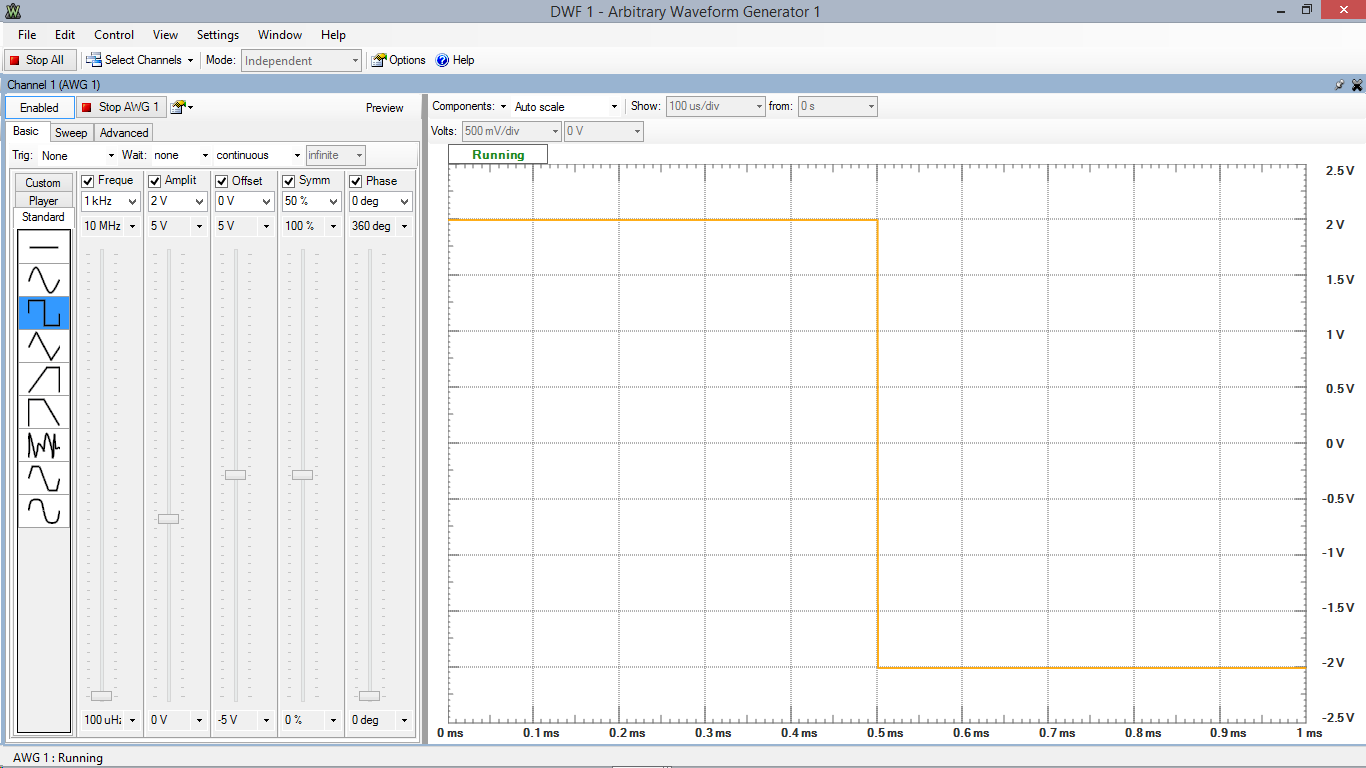Mesh Analysis
In this lab, we are given the circuit above and asked to find the current I1 through the 1.5 kΩ resistor and the potential difference V1 through the 20 kΩ resistor. We will first find the theoretical value, then build the circuit to obtain measured values.
Since we do not have all the resistors at our disposal, we swap the 1.5 kΩ resistor with a 1.8 kΩ resistor and the 20 kΩ resistor with a 22 kΩ one. We then measure the actual resistances of the resistors. The measured resistances correspond to the resistors of closest theoretical resistance (e.g. the measured 1.77 kΩ corresponds to the theoretical 1.8 kΩ resistor). Next mesh currents i1, i2, and i3 are drawn at each independent loop and are all given a clockwise sense. Three equations are obtained and simplified. These equations are solved using matrices using a calculator to give us the three mesh currents circled.
We now wire the circuit and provide the voltage sources using WaveForms and Analog Discovery. The red wire, red grabber provides the 5 V. The yellow wire, red grabber provides 2 V. And the black wire, black grabber is ground.
The resistors are set up on the breadboard in a manner that somewhat resembles the diagram. The top resistor is 1.8 kΩ, the next row of resistors are 4.7 kΩ and 6.8 kΩ from left to right, and the resistor at the far right crossing the center channel is the 22 kΩ one.
We use a digital multimeter to measure the current through the 1.8 kΩ resistor (
i1) and the voltage drop across the 22 kΩ resistor (
V1). Our measurements are
i1 = -0.332 mA and
V1 = 2.4 V.
Percent errors were 2.6% for
V1 and 27% for
i1.
The percent error in current 1 is way too high to be acceptable.
We revise our calculations. Using the actual resistances measured, we calculate the three mesh currents again. We find that the voltage has a 3.0% error and the current has 24% error, The DMM has a reading error of 1.5% max per user manual (http://manuals.harborfreight.com/manuals/37000-37999/37772.pdf). This still leaves us with an incredibly high percent error for current. It would be best to repeat the experiment to examine in greater depth where the sources of error may have come from.







.jpg)









































